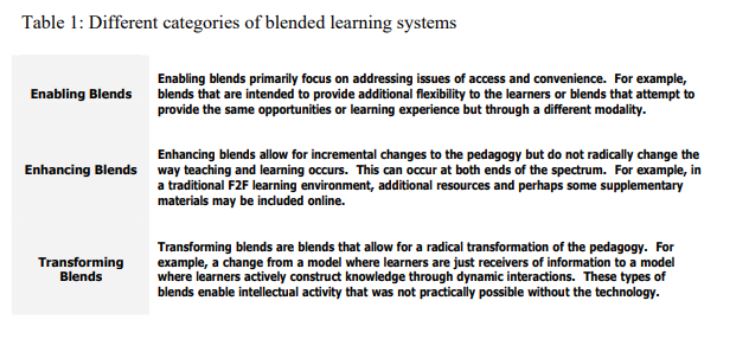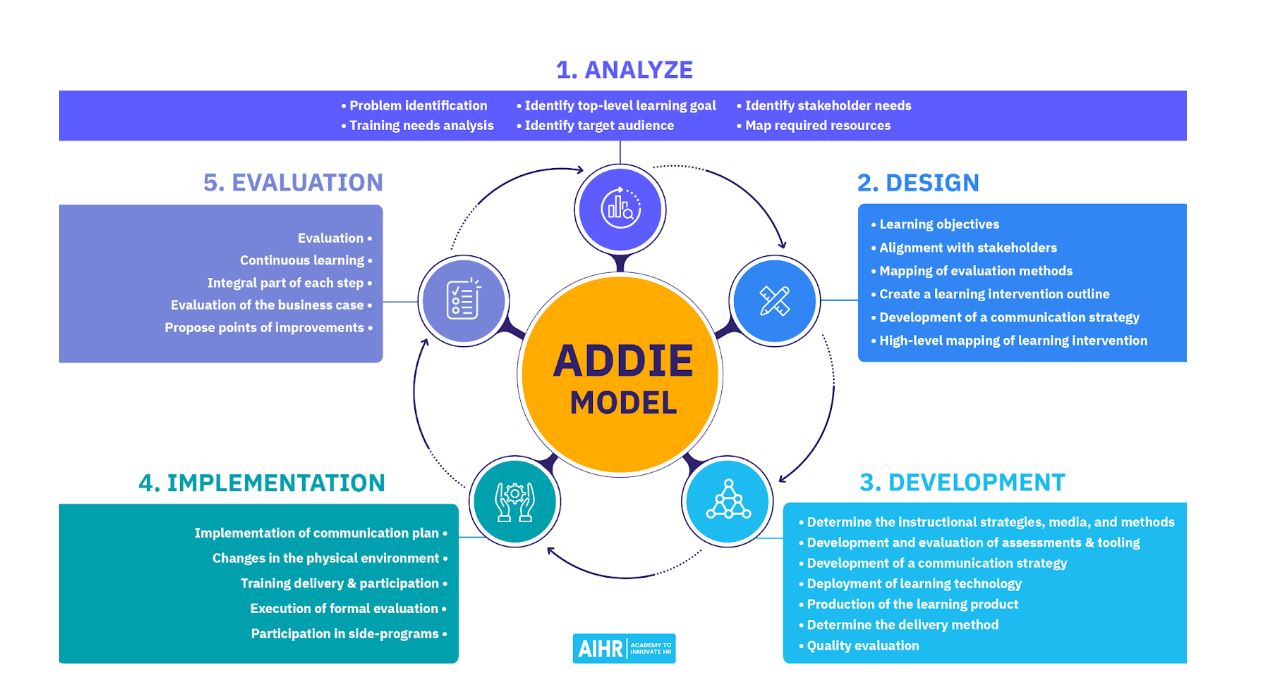Blended learning is an educational approach that combines traditional face-to-face classroom instruction with online learning activities. In a blended learning system, students have access to a range of digital resources and technologies that enhance their learning experience, while still having regular opportunities for interaction with their teacher and peers in a physical classroom.
BLENDED LEARNING SYSTEMS: DEFINITION, CURRENT TRENDS, AND FUTURE DIRECTIONS by Charles R. Graham
The term “blended learning” has gained significant traction in both academic and corporate spheres, signifying a vital paradigm shift in knowledge delivery. This shift was acknowledged by the American Society for Training and Development in 2003, when it identified blended learning as a prominent trend (cited in Rooney, 2003). A prescient insight into this transformation was offered by the president of Pennsylvania State University in 2002, who stated that the convergence of online and residential instruction represented an unrecognized yet significant trend in higher education (Young, 2002, p. A33). This sentiment was further underscored by The Journal of Asynchronous Learning Networks’ editor, who anticipated a substantial surge in hybrid (blended) courses in higher education, potentially encompassing up to 80-90% of all courses (Young, 2002).
In light of this background, the concept of “blended learning” has emerged as a focal point of discussion and innovation. Important questions are then raised: What constitutes blended learning? Why is blending beneficial? What existing models characterize blended learning? What are the challenges inherent in blending? And finally, what trajectories define the future of blended learning systems?
Different categories of blended learning are then defined in the following table:
All these categories have several impacts on the learning process, from accessibility, quality improvement, and transformation of pedagogy.
Working group
To improve teaching skills using blended learning, here are some steps we followed to create our own blended course on web.edapp.com
based on the ADDIE Model shown in the following image:

from https://www.aihr.com/blog/addie-model/
- Identify the learning objectives of your course: Before integrating technology into your teaching, we had to have a clear understanding of the learning outcomes you want your students to achieve. This help to choose the right online tools and activities to support their learning. As we are an international community coming from different places, we selected this topic due to its global appeal, centered around the universal ingredient: eggs.
- Select appropriate technology tools: There are many online tools and resources available for teachers to use in a blended learning environment, such as learning management systems, online quizzes and assessments, video lectures, and discussion forums. Choosing tools that align with your learning objectives and that will engage your students, was found by using Edapp.
- Design engaging online activities: When designing online activities, keep in mind that they should be interactive, engaging, and aligned with your learning objectives. You can use videos, simulations, and interactive quizzes to engage your students and help them understand complex concepts as shown during the entire course.
- Monitor student progress: In a blended learning system, it is important to monitor your student’s progress to ensure they are meeting their learning objectives. Use online assessments and quizzes to gauge their understanding of the material, and provide feedback to help them improve their performance. We decided to add different activities after each lecture to show important points to know when speaking of eggs.
- Encourage collaboration: Blended learning offers opportunities for students to collaborate and learn from each other. Encourage your students to work together on group projects and participate in online discussions to foster a sense of community and promote active learning.
By implementing this blended learning system and by following these steps, we created a more engaging and effective learning experience for our students. And with this step-by-step guide, our student can become a eggs-plorer.
During this topic, we designed a completely new course made by several lectures from all the teachers (members of the group) for learning, including scaffolding and facilitation. We discussed different pedagogical aspects that we considered to create a good learning environment from all around the world.
Blended learning seamlessly combines traditional face-to-face instruction with online resources, fostering interactive and dynamic educational experiences that cater to diverse learning styles, enhance student engagement, and promote deeper understanding and skill acquisition.

Lotta Fröjdfeldt August 10, 2023
Here you start off with describing and framing blended learning. You present a model for different types of blended learning. Here I can see similarities to the SAMR model by Puentedura, which also deals with technology in education. It is though somewhat critized.
Then you describe the road you walked with your group, and also describe the steps you took. This makes me curious: Are these steps based on any model?
-Thanks!
/Lotta
Valentin Scheiff August 10, 2023 — Post Author
Hi Lotta,
Thank you for your comment, We followed the ADDIE Model. I simplified it in my reflection, but you should find the same principles. I edited my reflection with a new image that shows how the ADDIE model works.
It might be “natural” to create a course like this, but during our discussions, I saw it was not the case. Following these different steps was really useful, it is like a recipe to follow where the teacher has to put his own touch.
This is something I will look deeper into in my own course as I might have missed some important steps. It seems intuitive when you are creating a course, but the development and execution might be not the best if one step is missing. Making an analysis on my own course is then necessary as I didn’t know this model before.
Valentin
Lotta Fröjdfeldt August 11, 2023
Nice to build upon a model for course design. Another intersting model is the ABC LD method: https://abc-ld.org/
-Thanks!